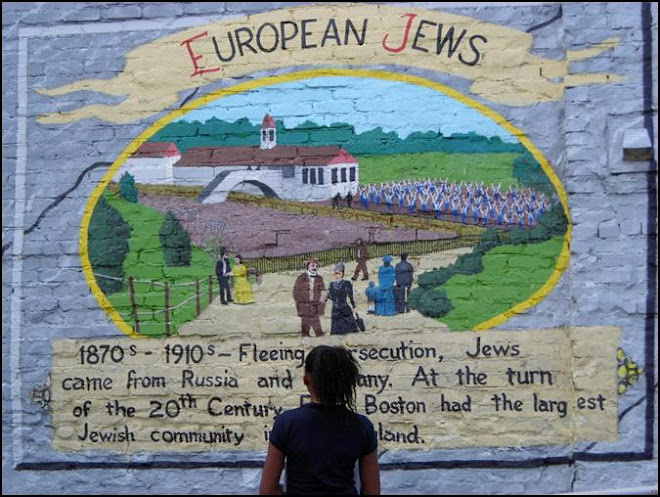"Miss, Eastie is like ghetto. Nobody here is going to come to a history thing."
J. is responding to my cheery announcement that the East Boston Historical Society will officially launch with a community event at the Atlantic Works Building in East Boston sometime near the end of January, 2010. I had just reminded J. and her classmates that almost every Boston neighborhood - Southie, Brighton, Dorchester - has a historical society. Not East Boston. I had talked about this as if it were a crime that must be solved, a wrong that they must right. I had ticked off Eastie history highlights that they had begun to discover:

Fastest clipper ships in the world made right here.
The first generation of Kennedys landed right here.
The nation's first underwater tunnel and first branch library - built right here.
The first naval skirmish of the American Revolution, the Battle of Chelsea Creek, fought right here.
And you are making history right now, I had reminded them, because your families are changing the face and feel of East Boston as immigrants to cities always do.
Then, I had addressed them as civic leaders of the highest caliber:
Your work - your projects exploring your own identity and all this stuff that people don't know about your neighborhood - it's going to be showcased for everybody to see. Your parents will be invited to come, and others in the community, and political leaders. Maybe the Mayor will show up. Others too. Everyone will wear name tags and drink apple juice and Coke and look around and thank you for saving the history of East Boston.
But J. is skeptical.
How do you convince kids that history actually matters? And can we expect 6th, 7th & 8th graders to become stewards of history, by creating "a community of memory" to link their own lives and experiences to what happened in their neighborhood long ago?
This is what we have set out to do, and we have no idea where we will end up. I thank J., because she will force us to keep it real every step along the way.


Good luck on your project! What a fun way to learn about history and what historians really do.
ReplyDeleteWith your up and coming launch and request for historic artifacts, I thought I would submit this link, to photgraphs in the US National Archive that are about East Boston, taken back in the 70's, in case you were not already aware of them.
ReplyDeleteThis is such a great project and I am so grateful!I have learned so much from all the work the students have done so far and look forward to what is to come!
Wishing everyone much success!
-S
http://www.flickr.com/photos/usnationalarchives/sets/72157620726678645/